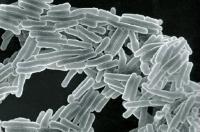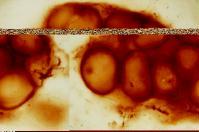Tuberculosis bacteria, spied

Tuberculosis is caused by bacteria. It is a bacterium well known for being taken for pathogenic bacteria. An average of two million people worldwide die each year and poses a risk to a third of the human population. In rich countries it was considered an ancestral disease. As a result, tuberculosis research has decreased considerably, but the risk has not disappeared. Many people carry the bacteria inside the body, but without developing the disease. In some cases the bacteria are activated, perhaps after years in the body, and tuberculosis develops.
The growing presence of cases in the most developed countries has once again become a problem of technological countries. As a result, attention has been aroused in advanced laboratories. The bacteria cannot be cleaned with conventional antibiotics.
Dependent medicine

The solution to this problem is to understand the behavior of the bacteria, that is, to investigate the processes of fighting antibiotics. The discovery of penicillin allowed to cure many dangerous diseases. However, bacteria are able to learn and as new generations are born they can develop their antibiotic resistance. Therefore, man has constantly tried to synthesize new and different antibiotics. The struggle is lost. In all cases the bacteria will become resistant. It is a clear example of Mycobacterium tuberculosis. But how do you get it?
In the case of turberculosis we have known during these days two groups of researchers. The team led by microbiologist Stanley Falkow of Stanford University and led by microbiologist William Jackobs of Albert Einstein College of Medicine in New York aimed to identify the genes needed for the survival of infections.
The Stanford team has used an animal model of tuberculosis. They have studied Mycobacterium marinum, similar to the tuberculosis bacillus. It grows faster than the other and is not polluted from the air. It causes a latent infection in frogs, like tuberculosis, which forms a series of cells called granulomas. The gene that synthesizes a fluorescent protein was mixed in the genome of the bacteria. Thus, when the bacteria were activated, it generated a green glow. Many genes from the bacteria were identified from this methodology.
M. The Tuberculosis genome has been known since 1998. Thus, it is confirmed that the latter contains genes equivalent to those found. The two genes were the ones that the scientists had the most attention, since they coded proteins with a very simple structure. This type of protein is called PE-PGRS. The elimination of these genes prevents the proper growth of the bacteria. However, the group does not know exactly what the role of PE-PGRS proteins is.
The Stanford team has not directly analyzed the tuberculosis germ. Therefore, the value of its results has been questioned. In fact, Colorado State University researcher Ian Orme believes the frog model is poor because its effect on mammals is very weak. Frogs should be infected with giant doses. We should see what M. Bacillus tuberculosis due to loss of the PGRS protein gene.
This type of research can be approached with the methodology developed at the Albert Einstein College of Medicine in New York. The team led by his microbiologist William Jackobs began his experiments with another bacillus. The association of bacilli in the cordonal structures and the ability to cause an infection were immediately linked. Removing proteins to make laces eliminated the harmful effects of bacteria.
General feature
The same experiment M. It was repeated with the bacterium Tuberculosis, which tends to join the cordonal structures. Mice were used to confirm this in the laboratory. Jakobs' group triumphed. In his opinion, the proteins removed, in addition to being harmful to the bacteria, were essential to survive inside the body. This last conclusion is questioned by other scientists.
The tuberculosis we have considered dominated, therefore, is not as controlled as was thought and there are more examples. Many variables enter the problem. Although at first the opposite was fulfilled, in the race of man and bacteria we are not the winners. However, it is time to tackle genetic research for these diseases, including those that have the highest incidence in undeveloped countries.
Buletina
Bidali zure helbide elektronikoa eta jaso asteroko buletina zure sarrera-ontzian











